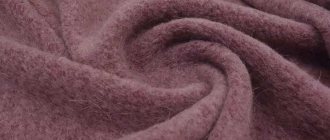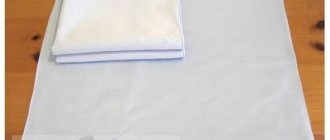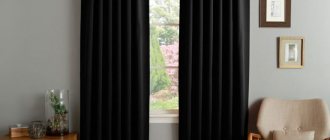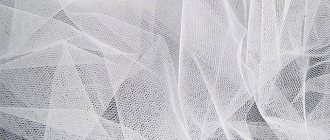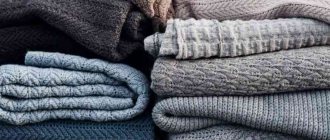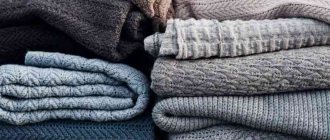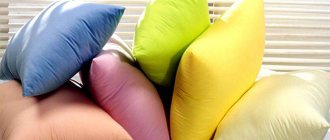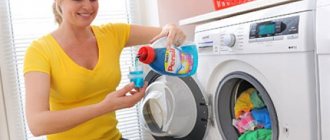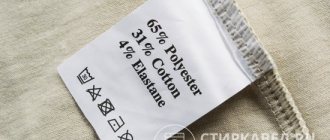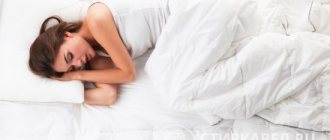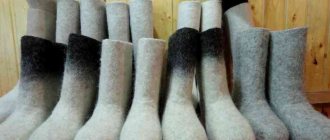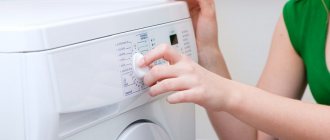Home / Natural fabrics
Back
Published: 01/26/2021
Reading time: 2 min
0
452
Things made of warm but rough fabric cause unpleasant sensations. Brushed cotton footer is an excellent alternative. It is especially suitable for those who have delicate sensitive skin. Let's get acquainted with the features of knitted fabric, its composition, creation, types, purpose and care features.
- 1 Distinctive features of knitwear
- 2 Composition and production process
- 3 Characteristics
- 4 Varieties
- 5 Application of material
- 6 How to wash and dry brushed footer 6.1 Actions when a puff forms
What kind of fabric is it and what is it made from?
Footer refers to an assortment of knitwear, in the production of which a specific weaving technique is used - lining.
The back of the canvas has soft fibers. The front surface has a smooth texture with a very fine scar.
Types of footer:
- Single thread. Cotton acts as a raw material. This type of knitwear is distinguished by its delicacy and fine structure.
- With lycra. The fabric acquires elasticity and resistance to shape changes. Its strength increases.
- Interlock. It is distinguished by the same smooth plane on both sides.
- Double thread footer. It contains synthetics, most often polyester, which provides the fabric with elasticity.
- Looped (three threads). Thanks to the combination of wool fibers and lycra, a very dense knitwear is obtained.
- With fleece. It is distinguished by voluminous pile in the form of loops, located on the reverse side of the fabric.
What does a footer look like
? Advantages of a lining fabric:
- softness;
- high moisture absorption;
- long-term operation with preservation of color decor;
- good thermoregulatory qualities, providing protection from cold and heat retention;
- the ability to eliminate irritation even on sensitive skin.
This knitwear does not stretch, which helps maintain the size of items and their shape. There are no puffs or pellets on the surfaces.
Interlock is perfect for making comfortable home products - pajamas, dressing gowns. Sportswear is made from double thread.
Looped dense footer is an excellent option for comfortable sweatshirts, demi-season coats, and warm sportswear. The fleeced variety is used to make thermal underwear and insulated products.
Pajamas and home suits are made from footer
Since hypoallergenic cotton soft footer does not cause allergic irritations to the skin, it is used to make diapers, baby vests, caps, and rompers for babies, ensuring complete safety for them.
ARTICLE FOR YOU
How to wash pique items: in the washing machine and by hand
Production technology
The footer is a very delicate, soft, pleasant-to-touch fabric made from natural cotton and, most importantly, easy to use. On the front side the material has a smooth structure, and on the back it is lightly brushed, which can warm you up just as well as natural wool. The basis of fabric production is cotton - a plant that is specially grown to produce cotton fiber. The process of obtaining fibers from cotton is quite interesting; nature itself came up with everything for us. Just imagine that when a cotton boll ripens, it opens, and people manually or using special equipment select fibers from it. These fibers are then sent to the plant, where they are purified from seeds. Then they are sorted by fiber length, pressed and the output is continuous fibers - yarn.
Knitting machine.
As mentioned above, the footer has two sides: the front (dense, smooth surface) and the back (soft, fluffy with short pile). It owes this to the texture of its production: only two types of thread are used in weaving the fabric:
- Smooth, strong at the base;
- Loose, soft, slightly curled.
Interesting fact . To increase the strength of the footer and eliminate the tendency to wrinkle, synthetic threads, such as lycra, are added to the fabric.
It is worth noting that a feature of the technology for producing lining is the approach to obtaining the material, namely, cotton fibers are not woven, but intertwined - knitted with loop broaches (the threads form loops, securely fastened together). Depending on the number of intertwined threads, the footer can be:
- Single thread . Most often, this footer is used for sewing children's clothing with a delicate velvety underside.
- Double thread . The footer already has a more noticeable pile and density. Used for sewing sweatshirts and suits.
- Three-strand . This is already the densest footer structure with thick pile. Suitable for sewing outerwear.
As you already understand, fleece fibers can be short or long, thick or not very thick. Thus, the density of the footer can vary from 170 to 350 g/m.
Rules for washing products
Before washing any liner product, read the label. This will allow you to choose the technique most suitable for each type of knitwear.
The temperature is set in accordance with the recommendations. Boiling is excluded.
To preserve the integrity of the delicate pile, items of clothing must be turned right side out before washing. Buttons, Velcro, hooks, zippers are fastened. In this state, it is possible to avoid damage from contact with hard parts.
Footer cannot be boiled
Hand wash products
Hand washing of items made from the densest and thickest footer is carried out at 50-60˚C. Thin knitwear needs to be washed at lower heat - no more than 40˚C.
A suitable detergent from a range of gentle formulations is dissolved in the collected water, heated to the required temperature.
Items that have noticeable extensive contamination are kept in a soap solution for 20 minutes, and then washed with careful squeezing movements without active friction and torsion.
Use cool water for rinsing. Squeeze out excess moisture with your palms, preventing things from twisting.
Wash by hand
Washing in a washing machine
A variety of footer products can be washed effectively in an automatic machine.
All items are pre-sorted in order to carry out the procedure separately for light and colored, thin and dense varieties.
Only types of textile products of the same type in composition should be loaded into the drum. You cannot wash, for example, polyester at the same time as the footer.
The temperature for thin and delicate items is set at 40˚C in delicate mode. For larger items of clothing made of dense thick lining fabric, the temperature indicator is no more than 60˚C.
Machine drying is not possible for delicate fabrics, so this function is disabled. A gentle spin is required at minimum speed. If possible, for delicate things it is completely turned off.
Rules for washing footer in a machine
The history of the footer
To date, the exact place of origin of the footer is still not known. This could be India, Egypt and even the Central Asian republics of the USSR. I think you can guess why? Of course, this can only be the country where cotton is grown. But many historians argue that (Futter) is a German word, and therefore the Germans were the discoverers. However, this is just a guess, not a fact. In any case, no matter who invented this fabric and no matter at what time it happened, we still take great pleasure in using its wonderful properties, which we will talk about later.
Detergents
Light-colored footer products can be effectively washed by hand using laundry soap. For machine washing, some housewives successfully use non-aggressive washing powder.
ARTICLE FOR YOU
How to properly wash and clean Alcantara material
But the best results without damaging the tissue can be achieved using gel-like compositions. It is advisable to give preference to universal brands that have a gentle effect on different types of fibers:
- The biodegradable hypoallergenic Synergetic gel has a good cleaning effect, preserving the shades and texture of the fabric.
- Sion gel is easy to wash, does not deform fibers, and removes dirt with low heating of water.
- Aqualine gel ensures cleanliness and freshness of washed items without color distortion.
- Allows you to effectively machine and hand wash different types of products made from HAAX gel footer.
- Concentrated Chirton gel copes with stains when washing in warm water.
- Corat Universal gel is used for delicate types of textiles, preserving the richness of the shades.
Washing gel
The advantage of gel detergent compositions is their easy dissolution in water, which does not require much heating. They remove even complex stains. When rinsing, no soap particles remain in the fibers.
Footer properties
In fact, footer is a fabric that has a lot of excellent properties:
- Air permeability . Due to the cotton fiber and the weaving method, footer clothing will breathe freely, because... air circulates unhindered;
- Hygroscopicity . The material perfectly absorbs moisture, which indicates comfort, even when sweat is released on the skin;
- Hygiene . The footer is safe for health, it has an antibacterial effect;
- Hypoallergenic . The material will not cause you allergies or itching. It has no odor;
- Wear resistance . With proper care, the footer will serve you for many years, and even over time it will not lose color;
- Easy to care for . The footer is easy to use and does not require special care;
- Heat conservation . The fabric retains heat very well due to good air exchange;
- Form stability . Due to the loop weaving, the footer is elastic and elastic, which allows the fabric to return to its original shape after stretching;
- Environmental friendliness . The production of footer is based on cotton, which is not subject to chemical synthesis;
- Ease of processing . It is easy to sew clothes from footer at home (no special machine required);
- Affordable price.
Bleaching things
Bleaching can be carried out to remove yellowed marks from light-colored products.
Ready-made products with aggressive chlorine are not used for delicate lining. For large stains, you can practice cleaning procedures with oxygen bleaches.
If the yellowish or gray marks are insignificant, it is advisable to turn to gels offered by manufacturers for white fabrics. Considering the composition of different types of footer, it is recommended to purchase universal brands:
Lion Hi-Class gel effectively restores whiteness. It is not only used for machine washing. You can add the product to the water when doing hand washing.
Whitening gel
Dr. gel has a pronounced brightening effect. Fresh White. Its soft effect allows you to maintain the shape of things and does not thin out the fibers. Removes stains even in cool water.
Wellery Delicate White gel restores the snow-white tone, keeping things clean and fresh.
Drying
It is recommended to dry footer products in the shade. This will avoid the damaging effects of ultraviolet rays.
ARTICLE FOR YOU
How to wash fleece items: in the washing machine and by hand
You can hang fairly quick-drying items indoors, providing ventilation. You should not try to speed up drying by placing them on heating radiators, as excessive heat damages the fibers.
Drying clothes
Outerwear, sweaters, sweatshirts are wrung out of excess moisture, wrapped in a terry towel. To maintain their shape, such products are laid out, carefully leveled, on the table, placing a thick blanket or towel.
Alternative fabric options
In fact, there are also fabrics that are similar in their properties to footer for sewing knitwear:
- Kulirka (kulirka ) It is also based on cotton fiber, but it can also be with the addition of lycra or polyester (no more than 10%). Kulirka is the thinnest knitwear for sewing linen and clothing.
Appearance of the cooler.
- Ribana . It is also based on cotton fiber, but it can also be with the addition of lycra or polyester (no more than 5%). Ribana is used for sewing children's and casual clothing; it costs more than kulirka.
Appearance of ribbed fabric.
- Interlock . Consists of 100% cotton without any impurities. The fabric is elastic, holds its shape and, importantly, is double-sided (the same on both the front and back sides). Used for sewing bed linen, curtains and casual wear.
Appearance of interlock fabric.
All the fabrics described above are very similar to each other not only in their characteristics, but even in the price segment. But it is worth noting that only a footer can keep you warm in cold weather. Neither a cooler, nor a rib, nor an interlock will give you such warmth and comfort as a footer.
Ironing
Since high temperatures can damage the footer, items made from this material should not be ironed very often, only when pronounced wrinkles are detected.
For natural cotton fabric, the temperature is set in the range from 140 to 160 degrees. If the fabric contains synthetic fibers along with cotton fibers, then this indicator is reduced to 110˚C.
Iron on the wrong side, placing a light cloth made of natural threads. You can use a gauze pad.
Ironing the footer
It is convenient to return smoothness to bulky items using a vertical steamer.
Care
When caring for products made from footer, avoid exposure to the sun's burning rays, which can lead to destruction and deformation of the fibers.
After drying, small items are carefully folded, straightening out all creases and folds. Lay out in loose piles in a dry dressing room or closet.
A coat made of dense, prestigious footer is placed on a hanger, fastened with a zipper or buttons. For long-term storage, use a special case made of breathable material.
When purchasing new things, the fabric of which is at least 90% cotton, you need to take into account that they can shrink, so choose a size larger.
Taking into account the features of comfortable hypoallergenic footer fabric, following the recommendations for washing and care, it is possible to preserve the decorative qualities and shape of the products for a long time. It is important to consider that high heating is excluded for this fabric.
Distinctive features of knitwear
Brushed footer is a cozy fabric with excellent organoleptic properties. The reverse is covered with fluffy pile. The front side is smooth.
Material:
- tactilely comfortable;
- hypoallergenic;
- hygroscopic;
- breathable;
- universal;
- relatively inexpensive.
In general, the fabric is elastic, stretches, and is not prone to deformation, since thanks to the loop weaving it quickly takes on its original shape.
